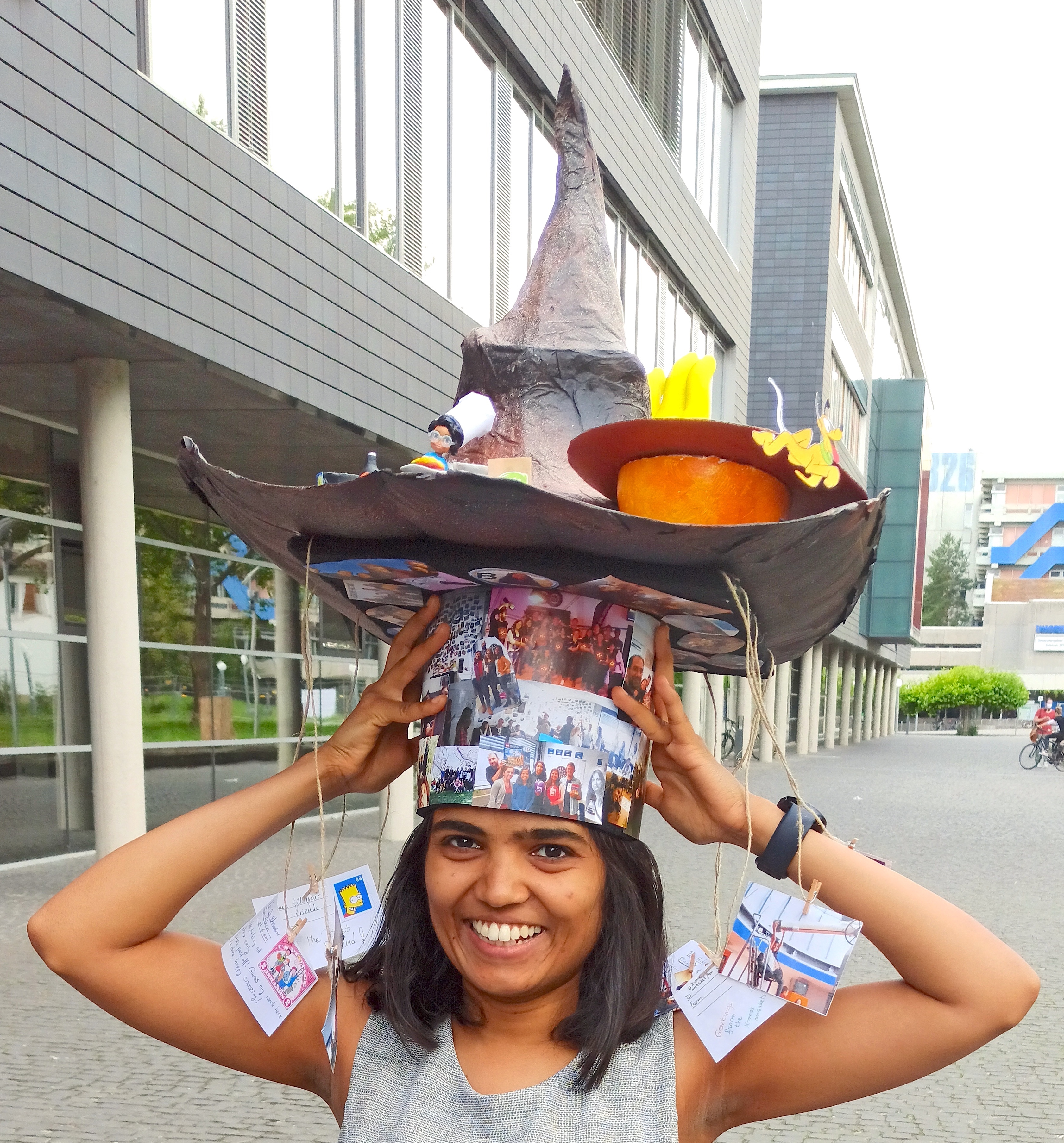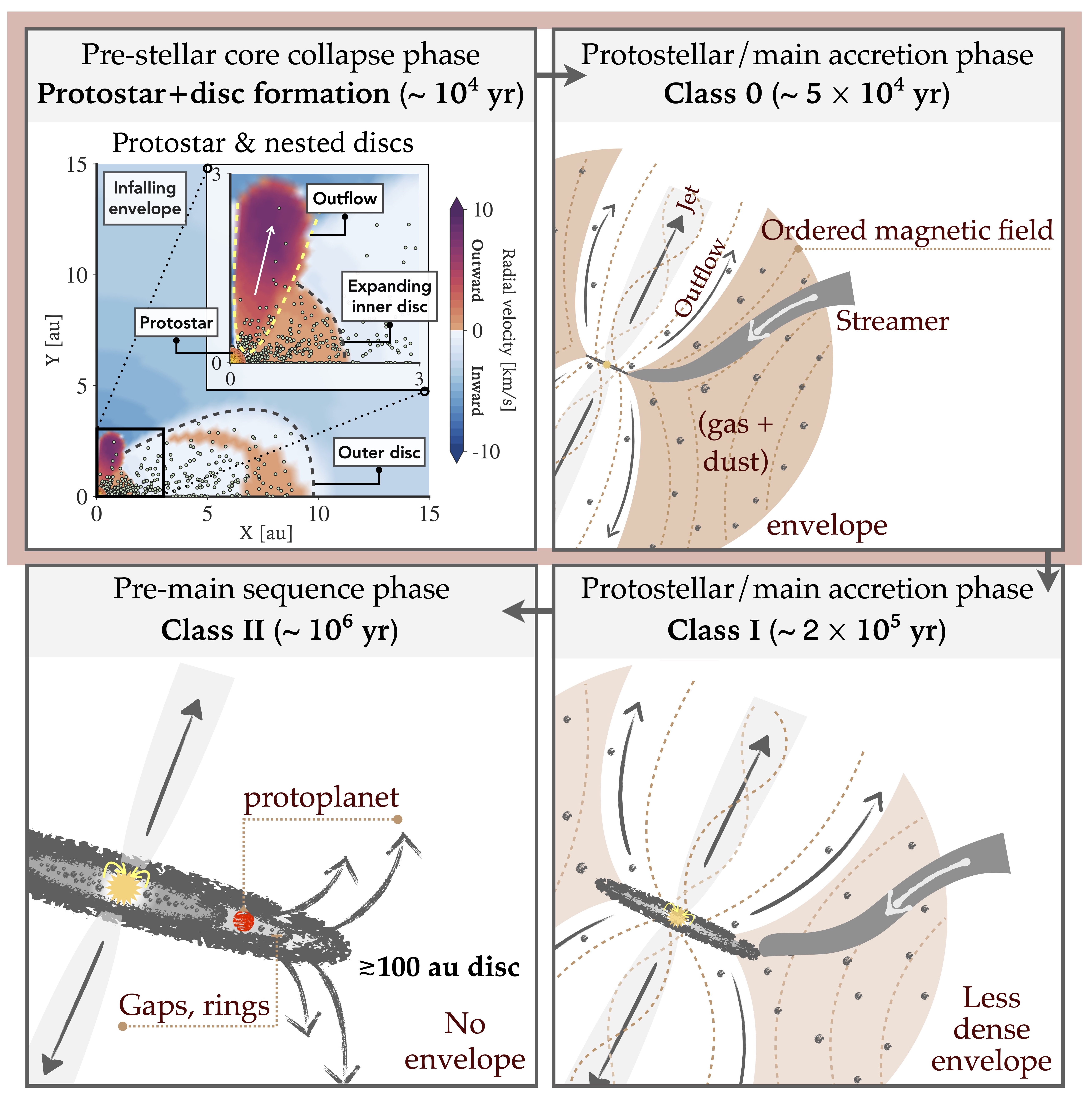Lead author:
• Bhandare A., Ahmad A. A., and Commerçon B., "Turn up the light: Radiative efficiency of protostars at birth", 2025, A&A Letters, 702, L7.
• Bhandare A., Commerçon B., Laibe G., Flock M., Kuiper R., Henning Th., Mignone A., and Marleau G-D., "Mixing is easy: New insights for cosmochemical evolution from pre-stellar core collapse", 2024, A&A, 687, A158.
• Bhandare A., Kuiper R., Henning Th., Fendt C., Flock M., and Marleau G-D., "Birth of convective low-mass to high-mass second Larson cores", 2020, A&A, 638, A86.
• Bhandare A. and Pfalzner S., "DESTINY: Database for the effects of stellar encounters on disks and planetary systems", 2019, Computational Astrophysics and Cosmology, 6: 3.
• Bhandare A., Kuiper R., Henning Th., Fendt C., Marleau G-D., and Kölligan A., "First core properties: From low- to high-mass star formation", 2018, A&A, 618, A95.
• Bhandare A., Breslau A. and Pfalzner S., "Effects of inclined star-disk encounter on protoplanetary disk size", 2016, A&A, 594, A53.
Co-author:
• The Treilles group (including Bhandare A.), "Formation and evolution of a protoplanetary disk: combining observations, simulations, and cosmochemical constraints", 2024, A&A, 691, A147.
• Leclerc A., Jezequel L., Perez N., Bhandare A., Laibe G., and Delplace P., "The Exceptional Ring of buoyancy instability in stars", 2024, Physical Review Research, L012055.
• Lin CL. et al. (including Bhandare A.), "EDEN: Flare Activity of the Nearby Exoplanet-hosting M Dwarf Wolf 359 Based on K2 and EDEN Light Curves", 2021, The Astronomical Journal, 162, 11.
• Pfalzner S., Aizpuru Vargas L., Bhandare A., and Veras D., "Significant interstellar object production by close stellar flybys", 2021, A&A, 651, A38.
• Rosen A. L., Offner S. S. R., Sadavoy S. I., Bhandare A., Vázquez-Semadeni E., and Ginsburg A., "Zooming in on Individual Star Formation: Low- and High-mass Stars", 2020, Space Science Reviews, 216, 62.
• Zhao B. et al. (including Bhandare A.), "Formation and Evolution of Disks Around Young Stellar Objects", 2020, Space Science Reviews, 216, 43.
• Gibbs A. et al. (including Bhandare A.), "EDEN: Sensitivity Analysis and Transiting Planet Detection Limits for Nearby Late Red Dwarfs", 2020, The Astronomical Journal, 159, 169.
• The ‘Oumuamua ISSI team , "Natural History of Oumuamua", 2019, Nature Astronomy, 3, 594-602.
• Pfalzner S., Bhandare A., Vincke K., and Lacerda P., "Outer solar system possibly shaped by a stellar fly-by", 2018, ApJ, 863, 45 ( Press release ).
• Pfalzner S., Bhandare A. and Vincke K., "Did a stellar fly-by shape the planetary system around Pr 0211 in the cluster
M 44?", 2017, A&A, 610, A33.
• Pfalzner S. et al. (including Bhandare A.), "Observational constraints on star cluster formation theory. I. The mass-radius relation", 2016, A&A, 586, A68.



